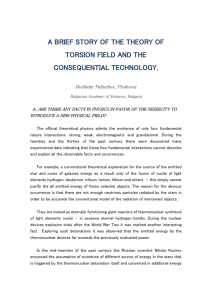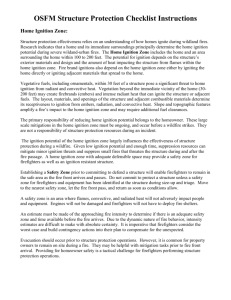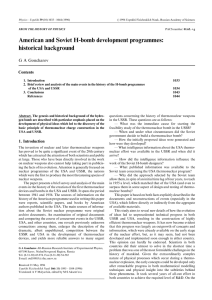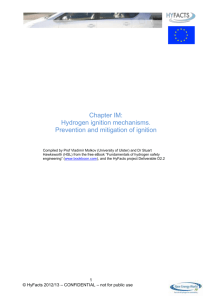plane thermonuclear burn waves in solid DT mixture compressed
advertisement
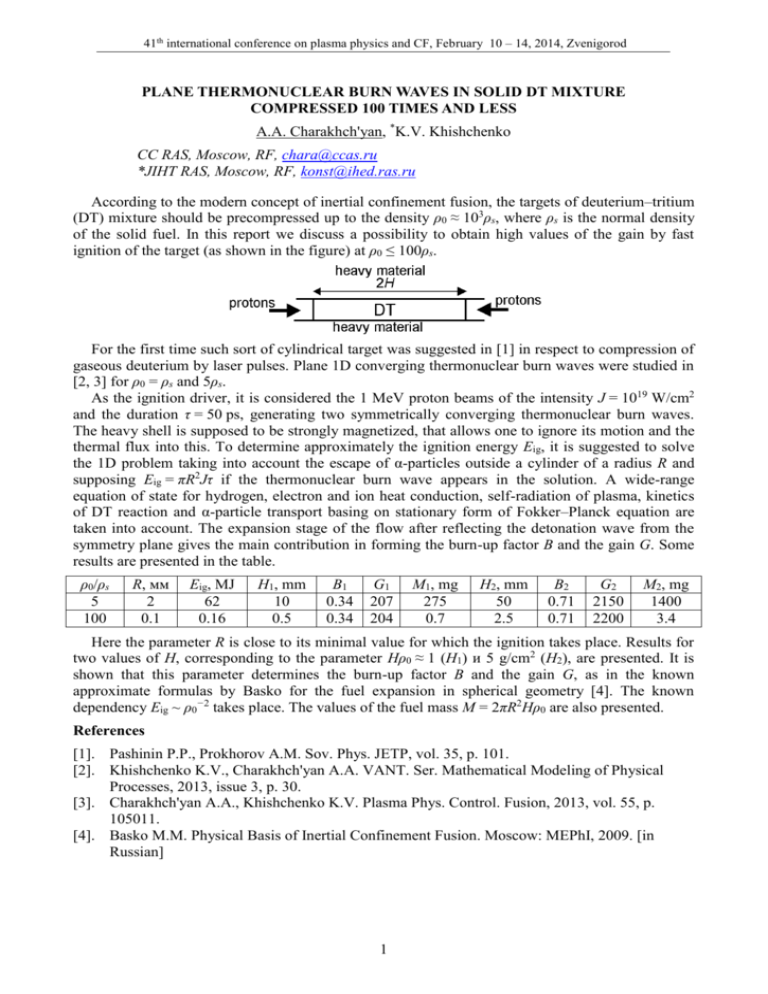
41th international conference on plasma physics and CF, February 10 – 14, 2014, Zvenigorod PLANE THERMONUCLEAR BURN WAVES IN SOLID DT MIXTURE COMPRESSED 100 TIMES AND LESS A.A. Charakhch'yan, *K.V. Khishchenko СС RAS, Moscow, RF, chara@ccas.ru *JIHT RAS, Moscow, RF, konst@ihed.ras.ru According to the modern concept of inertial confinement fusion, the targets of deuterium–tritium (DT) mixture should be precompressed up to the density ρ0 ≈ 103ρs, where ρs is the normal density of the solid fuel. In this report we discuss a possibility to obtain high values of the gain by fast ignition of the target (as shown in the figure) at ρ0 ≤ 100ρs. For the first time such sort of cylindrical target was suggested in [1] in respect to compression of gaseous deuterium by laser pulses. Plane 1D converging thermonuclear burn waves were studied in [2, 3] for ρ0 = ρs and 5ρs. As the ignition driver, it is considered the 1 MeV proton beams of the intensity J = 1019 W/cm2 and the duration τ = 50 ps, generating two symmetrically converging thermonuclear burn waves. The heavy shell is supposed to be strongly magnetized, that allows one to ignore its motion and the thermal flux into this. To determine approximately the ignition energy Eig, it is suggested to solve the 1D problem taking into account the escape of α-particles outside a cylinder of a radius R and supposing Eig = πR2Jτ if the thermonuclear burn wave appears in the solution. A wide-range equation of state for hydrogen, electron and ion heat conduction, self-radiation of plasma, kinetics of DT reaction and α-particle transport basing on stationary form of Fokker–Planck equation are taken into account. The expansion stage of the flow after reflecting the detonation wave from the symmetry plane gives the main contribution in forming the burn-up factor B and the gain G. Some results are presented in the table. ρ0/ρs 5 100 R, мм 2 0.1 Eig, MJ 62 0.16 H1, mm 10 0.5 B1 0.34 0.34 G1 207 204 M1, mg 275 0.7 H2, mm 50 2.5 B2 0.71 0.71 G2 2150 2200 M2, mg 1400 3.4 Here the parameter R is close to its minimal value for which the ignition takes place. Results for two values of H, corresponding to the parameter Hρ0 ≈ 1 (H1) и 5 g/cm2 (H2), are presented. It is shown that this parameter determines the burn-up factor B and the gain G, as in the known approximate formulas by Basko for the fuel expansion in spherical geometry [4]. The known dependency Eig ~ ρ0−2 takes place. The values of the fuel mass M = 2πR2Hρ0 are also presented. References [1]. Pashinin P.P., Prokhorov A.M. Sov. Phys. JETP, vol. 35, p. 101. [2]. Khishchenko K.V., Charakhch'yan A.A. VANT. Ser. Mathematical Modeling of Physical Processes, 2013, issue 3, p. 30. [3]. Charakhch'yan A.A., Khishchenko K.V. Plasma Phys. Control. Fusion, 2013, vol. 55, p. 105011. [4]. Basko M.M. Physical Basis of Inertial Confinement Fusion. Moscow: MEPhI, 2009. [in Russian] 1



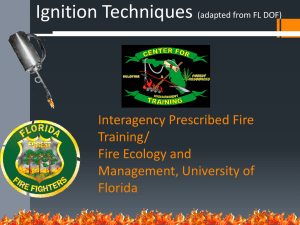
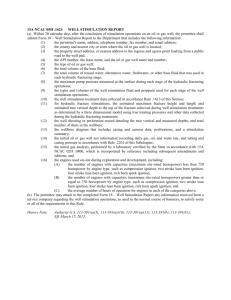






![tp900.101 [test procedure] - Department of Planning, Transport and](http://s3.studylib.net/store/data/007247620_1-a44905347a7cb6aa1a5a6b932dae868a-300x300.png)

